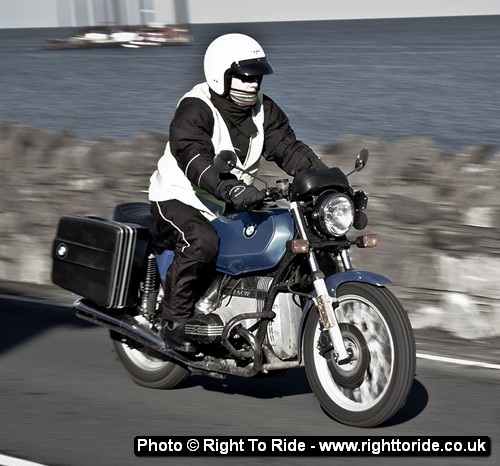 Updated 17th January 2013
Updated 17th January 2013
Roads Service tell us, regarding the Maintenance scheme: Sea defence wall at the junction on the Portaferry Road that: “The decision to lower a section of parapet between the junction of the Mountstewart Road and A20 Portaferry Road was based on standards set out in the Design Manual for Roads and Bridges, TD 9/93 – Highway Link Design, relating to the Stopping Sight Distance.”
Roads Service have also informed us that our general concerns have been taken into consideration and that there is a feeling, “that for future schemes it may be possible to use a different style of coping, as long as it is in keeping with the surroundings such as “Castillated”, “”Flat stone” or “Rounded render”.”
So all we can say is that standards worked by the Roads Service do in general cover motorcyclists as vulnerable road users, that changes are made when issues are picked up and that the “ system” works.
Full details can be read in the comments section below.
Dragons Teeth Nice But Deadly!
26th October 2012
“Dragon Teeth” refers to a type of stone wall which is typical in Northern Ireland.
The part of these walls which give them their “Dragon Teeth” name and appearance are their tops which have large angular stones vertically cemented in place.
At Right To Ride we think the idea is to make these walls look rustic, fitting in as part of the natural surroundings of “old” rural Northern Ireland, nice but deadly.
On the Ards Peninsula one these “Dragon Tooth” walls has just been constructed at Ballyhalbert as part of upgrading sea defences and the other on the Strangford Lough side, again as part of upgrading sea defences.
Although some of the teeth of the walls are round and inoffensive (as much as a stone wall can be inoffensive), the majority are predominately jagged and they pose a potential risk for riders who may hit them.
With no footpath between these two walls and the edge of the road, these walls are not set back from the road and would be the first impact in the case of a crash, for riders and also for other vulnerable road users such as cyclists.
It could be said that there is little risk of riders impacting these walls however we know of one case were a fatality occurred.
This case was included in the Right To Ride, Northern Ireland Motorcycle Fatality Report 2012, which is an In depth Study Of 39 Motorcycle Collisions In Northern Ireland between 2004 and 2010, in Which 41 Motorcyclists Were Fatally Injured
Of the n.39 cases, there were n.12 cases (30.8%) in which a motorcyclist impacted against road infrastructure. In one of these cases, the wall had “dragon teeth” which caused the injuries to the motorcyclist.
Two mopeds were involved, although the evidence is unable to determine with absolute certainty, one of the mopeds may have collided with the other and caused the moped and rider to deflect and hit a nearby wall.
There doesn’t appear to be any onus on private land owners or the government agencies to ensure that road structures such as these walls are “safe” for motorcyclists or other road users.
However at Right To Ride we believe that the authorities need to take a step back, have a good look at these walls and the potential risk to motorcyclists and other vulnerable road users.
Perhaps the Roads Service and other departments involved in building or re-building these walls and specifically the features such as Dragon Teeth, need to take a look at the consequences of not including vulnerable road users in the mind set of design and delivery that permit structures such as these Dragon Teeth walls.
It is apparent from the photographs included, that there is no set rule or guideline as to the type of stones used, nor we presume has any analysis of the risk of the type of stones used been carried out.
What You Can Do!
Do you know of other examples of these “Dragon Teeth” walls.
Send us a picture and a location and we can add these to the gallery.
Remember your own safety: If stopping to look or take pictures, please park in a safe and secure manner.
Do not put yourself in any danger.
Do not stop or hinder the normal flow of traffic.
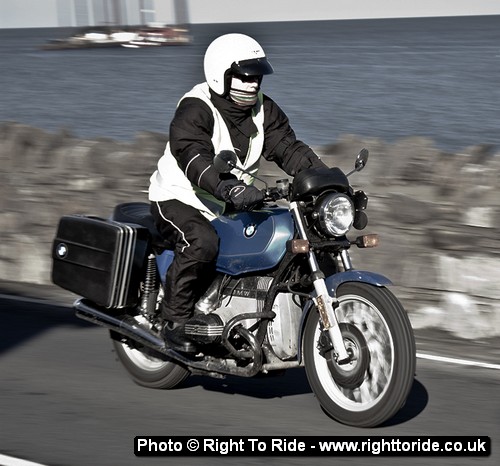

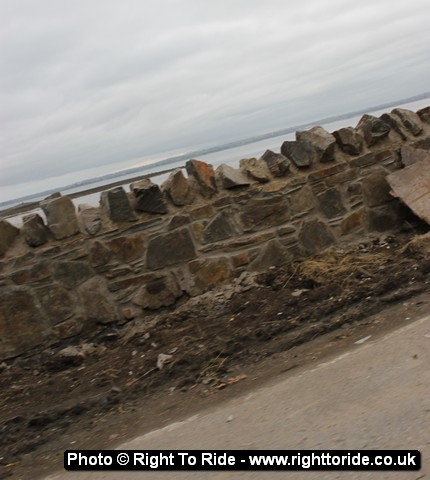
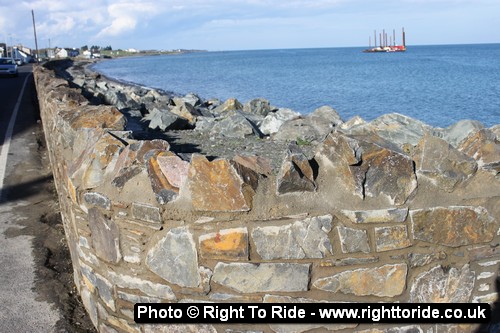
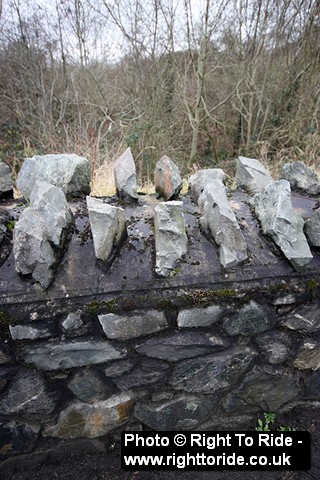
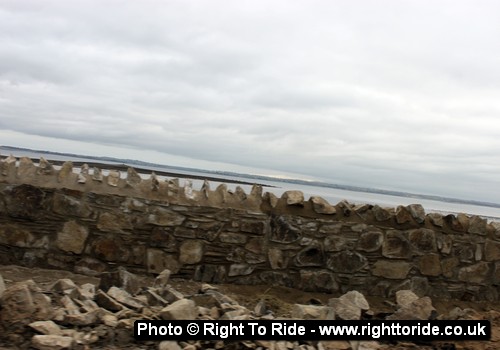
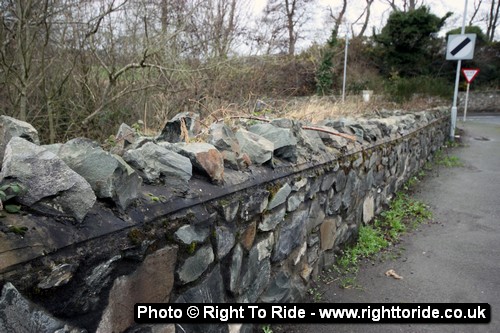



We are forced by law to wear helmets, they want us to wear day glow clothing, then they allow people to build death traps like this they must be sitting on their brains. (What I really think of them is not printable so I will say no more)
I really wish we could return to the good ole days when people had to make a concerted effort to write a letter, put it in an envelope and then buy a stamp and post it to whoever is responsible for the issue in discussion. That would eliminate the overwhelming majority of populist comments that “they” write on sites such as this.
Day glow clothing – the UK government does not require you (Stephen) or anybody to wear hi viz jackets or even reflective strips. The Highway code recommends it, but the choice is entirely yours.
The purpose of the article is I presume to raise awareness to an issue that perhaps is not on the Department for Regional Development’s radar. As there has been one death over the last 6 years – which by the way is more than the number of fatalities caused by crash barriers, it is something that requires consideration.
Simply – who is “them/they”? Martians? Some poor schmuk sitting in his office at the DRD having to read this crap?
Sea defence wall on A20 Portaferry Road, Newtownards at the junction of Mountstewart Road
At Right To Ride we contacted the Roads Service regarding our general concerns featured in our article on “Dragon Tooth” type walls on the Ards Peninsula.
We also mentioned our specific concerns about the wall recently built on the Portaferry Road with the junction of Mountstewart Road.
After this wall was completed we noticed that from the junction the line of sight was obscured looking towards Newtownards.
As we about to write the stones on the top of a section of the wall were removed, thus giving a line of sight from the junction.
Our understanding was that the design/building of these walls was not necessary Roads Services remit, however as we subsequently wrote to Roads Service, we believed that after the wall was completed that a safety audit by Roads Service may have picked this line of sight issue up.
We have now received a very positive and detailed reply from Roads Service Ards Section and Structure Section.
Roads Service tell us, regarding the Maintenance scheme: Sea defence wall at the junction that:
“The decision to lower a section of parapet between the junction of the Mountstewart Road and A20 Portaferry Road and sighting toward Newtownards was based on standards set out in the Design Manual for Roads and Bridges, TD 9/93 – Highway Link Design, relating to the Stopping Sight Distance.
The standards that provide guidance on the use of masonry parapets are the Design Manual for Roads and Bridges, TD 19/06 – “Requirements for Road Restraint Systems” and the Department for Transport – “Guidance on the Design, Assessment and Strengthening of Masonry Parapets on Highway Structures – 2012”.
Department for Transport (DfT)
Masonry parapets are designed to provide protection for road users and are frequently called upon to contain errant vehicles. The key objectives are to ensure parapets are capable of:
Providing specified levels of containment to limit the penetration by errant vehicles, and reducing the risk of such vehicles overtopping the parapet or overturning;
Protecting other highway users by either redirecting vehicles on to a path close to the line of the parapet, or arresting the vehicle with acceptable deceleration forces;
Protecting those in the vicinity of a parapet by ensuring any masonry ejected does not lead to disproportionate consequences.
Roads Service’s objective is to maintain the road infrastructure to keep it safe, effective and reliable.”
Specifically regarding our concerns with regard to the “Dragon Tooth” coping, the Roads Service contact said, “I have taken your concerns into consideration and feel that for future schemes it may be possible to use a different style of coping, as long as it is in keeping with the surroundings such as “Castillated”, “”Flat stone” or “Rounded render”.”
So all we can say is that standards worked by the Roads Service do in general cover motorcyclists as vulnerable road users, that changes are made when issues are picked up and that the “ system” works.